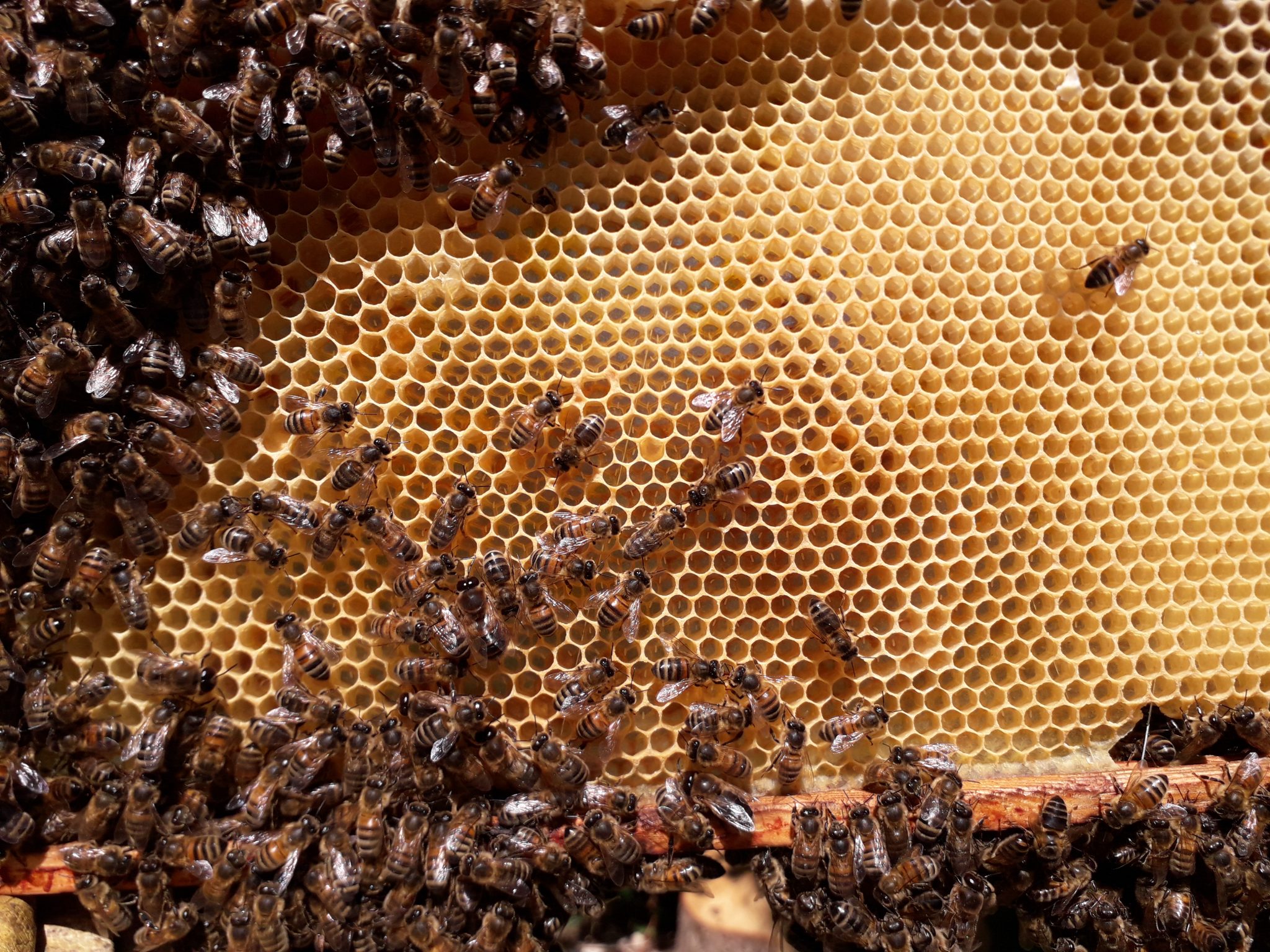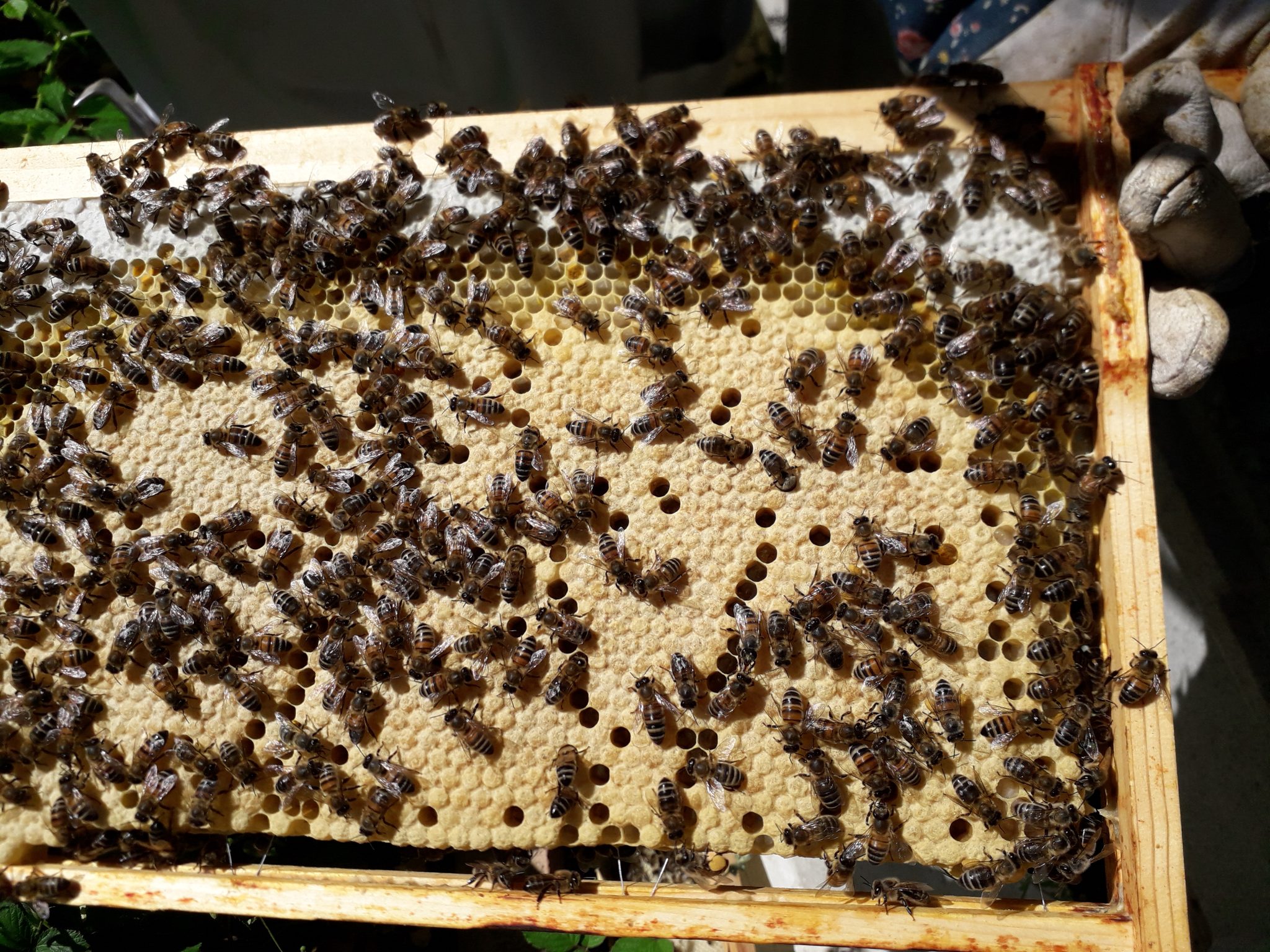- Saturday, June 07, 2025
- Stay Connected
 Abraham Lincoln
If given the truth, the people can be depended upon to meet any national crisis...
Abraham Lincoln
If given the truth, the people can be depended upon to meet any national crisis...
 Guildford news...
for Guildford people, brought to you by Guildford reporters - Guildford's own news service
Guildford news...
for Guildford people, brought to you by Guildford reporters - Guildford's own news service
Beekeeper’s Notes: Perfection Of The Comb
Published on: 1 Jun, 2020
Updated on: 31 May, 2020
Hugh Coakley keeps bees in Worplesdon
It’s been a funny year so far. Sunshine well above average with April in the running for the sunniest since Met Office records began in 1929. Spring temperatures are up and rainfall down; a bit different the wet winter just gone.

Perfection of the comb. You can see the hexagonal walls of the individual cells even though the mouth has a rounded rim. The comb is double sided with each side offset by half a cell width for strength.
I have two new queens, recently hatched. One in a small swarm I collected locally and one from one of my hives which I had split when it looked like it was going to swarm itself.
Both are looking really good. They are laying well and their offspring are quiet and gentle. Just what is wanted after losing three hives over the winter.

One of the new queens in my apiary, freshly marked with a dab of white marker on her back, striding out on the comb. Click on the photo to see an enlarged image.
With a bit of luck, they will not only be nice to work with but also be good foragers and produce loads of surplus honey.
Swarms can be unpredictable, occasionally aggressive and hard to handle. I went to collect a swarm in the last week and it was a b****r. It was up a tree and a bit high for me to collect so I called a friend who I knew was looking for bees, and just as importantly, with a ladder.
It was large, probably between 10,000 and 20,000 bees and about 15 foot up on a branch. The plan was to get above the swarm, cut the branch it had gathered on and gently lower it to the ground and into a waiting hive. That is what usually happens. When he cut the branch though, it sprang and there were angry bees everywhere. Not for the faint-hearted.

The regularity of the construction is staggering. So exact that it was considered in the eighteenth century to be adopted as a standard unit of measurement.
But what struck me this month when I looked at the comb being produced by the new colonies was the perfection of construction. Efficient in the minimal use of wax, it is starkly beautiful.
Hexagonal, tilted about 10 degrees upwards to stop the runny nectar from dripping out and each side of the double sided comb is offset for extra strength, it is the centre of the bees’ world holding honey and pollen stores and the future generation new bees as eggs and larvae.
It is one of nature’s many wonders.

















Harry Eve
June 2, 2020 at 8:07 am
Great photos. I have always assumed that the pattern of bands on the abdomen would be more uniform within a single colony but the second photo shows, very clearly, how much variation can occur.